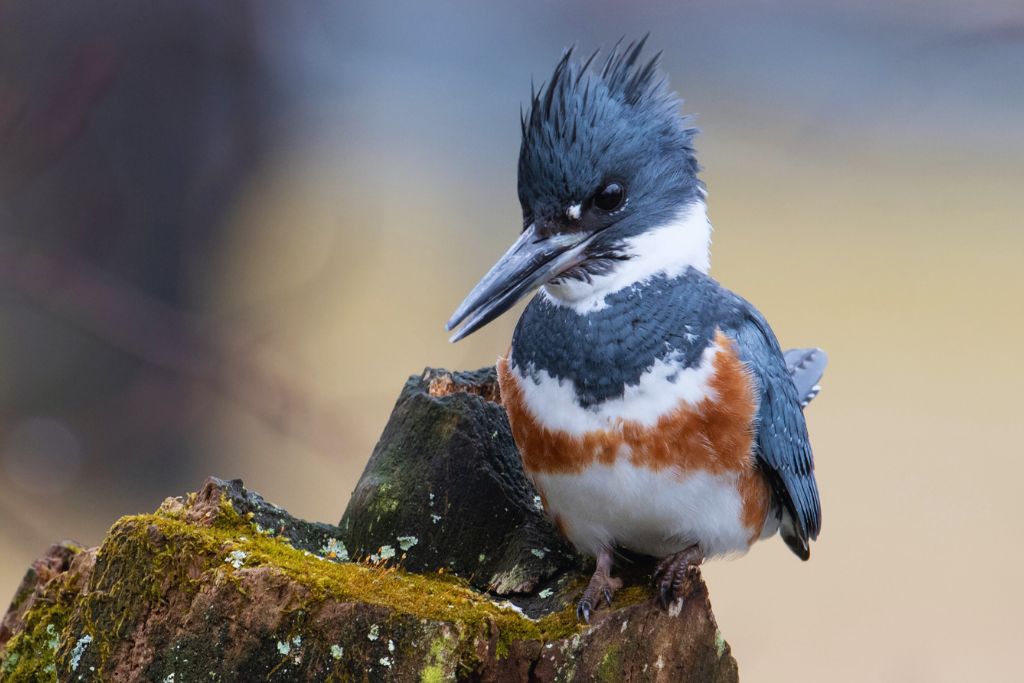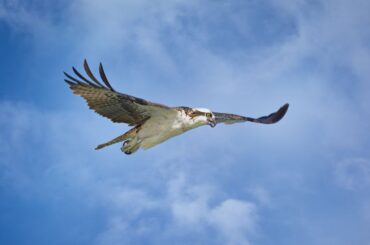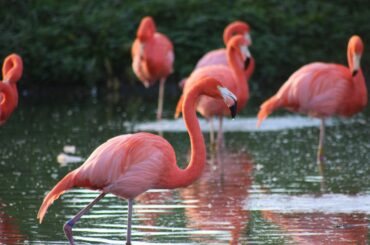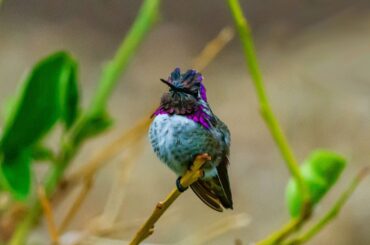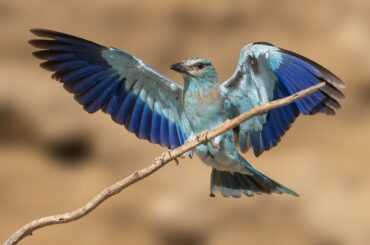Are you ready to discover the stunning variety of bluebirds that grace the skies of Florida? Have you ever imagined encountering vibrant plumage on avian adventures?
Are you ready to discover the stunning variety of bluebirds that grace the skies of Florida? Have you ever imagined encountering vibrant plumage on avian adventures?
Florida is a haven for these enchanting winged wonders, from the dazzling indigo bunting to the majestic blue grosbeak. The indigo bunting’s deep blue hues and blue gorbeak’s brilliant sapphire feathers are only one of the many Bluebirds in Florida.
Bluebirds are beautiful and colorful birds of Florida. This includes North Florida birds, which are known for their vibrant plumage and melodic songs. This article will share interesting facts on blue-colored birds in Florida and some Florida bird pictures.
Prepare to be mesmerized by the enchanting wonders of this list of Florida birds and learn more about them, from fascinating tidbits about their habitat to migration patterns and unique behaviors. Grab your binoculars and join us as we delve into the vibrant world of Florida’s bluebirds!
What Does a Blue Bird Look Like in Florida?
Bluebirds found in Florida showcase a stunning array of colors and unique features. These avian gems exhibit an assortment of striking hues. They range from deep indigo to vibrant turquoise and even brilliant sapphire.
Their feathers often boast intricate patterns. Some species display contrasting shades of blue, black, and white. These birds vary in size, with the average length ranging from 5 to 7 inches (12.7 to 17.8 cm). They have compact and streamlined bodies, enabling them to navigate their environments with agility.
Bluebirds in Florida can be found in various regions, including coastal areas, forests, wetlands, and urban environments. Their striking coloration aids in camouflage and can serve as a way to communicate within their species.
Regarding their diet, bluebirds in Florida primarily feed on insects, spiders, and caterpillars. They are known to be insectivorous, relying on these food sources for their nutrition. Their dietary preferences enable them to adapt to their specific habitats and thrive in the diverse ecosystems of Florida.
1. Indigo Bunting
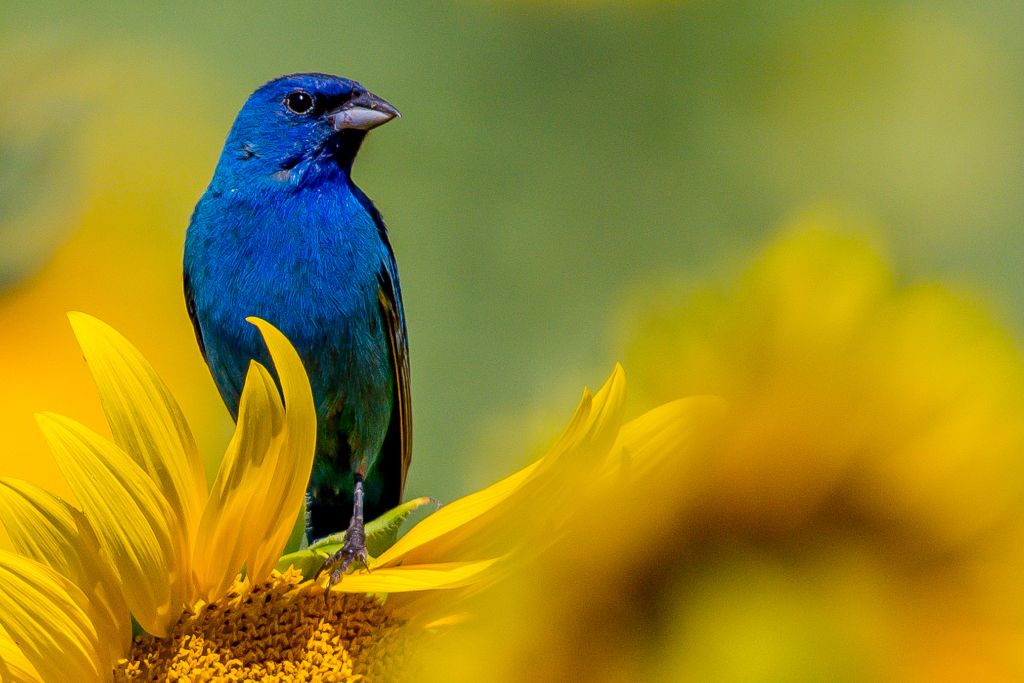
- Kingdom: Animalia
- Phylum: Chordata
- Class: Aves
- Order: Passeriformes
- Genus: Passerina
- Species: P. cyanea
The indigo bunting (Passerina cyanea) is a small songbird measuring about 5.5 to 6 inches (14 to 15 cm) in length. Adult males are known for their vibrant indigo-blue plumage. Females and juveniles have more subdued brown feathers with hints of blue.
The brilliant blue plumage of male indigo buntings results from light scattering rather than the presence of blue pigment. This phenomenon, called structural coloration, gives them their stunning appearance.
These birds have short, cone-shaped bills, ideal for foraging and consuming seeds and insects. They also own robust and agile flight capabilities. These allow them to navigate through dense vegetation with ease.
Indigo buntings are primarily found in open woodland habitats. They prefer habitats with dense vegetation where they can find food and shelter. In Florida, indigo buntings can be spotted in various habitats, including open woodlands, forest edges, meadows, and gardens.
Indigo buntings take long-distance migrations. Those from Florida travel to Central and South America during the non-breeding season.
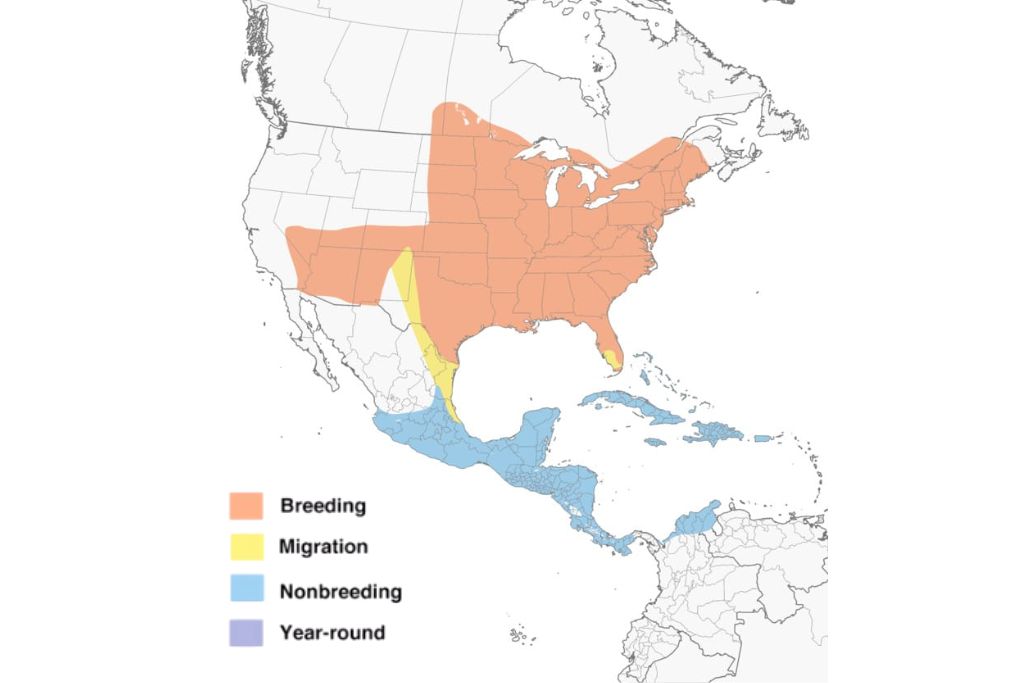
Indigo buntings have a relatively long life expectancy, with individuals living up to 10 years or more. However, many do not survive their first year due to predation, harsh weather conditions, and other factors.
Their songs are often described as sweet, lively, and a joy to hear, adding to their charm as songbirds.
2. Eastern Bluebird
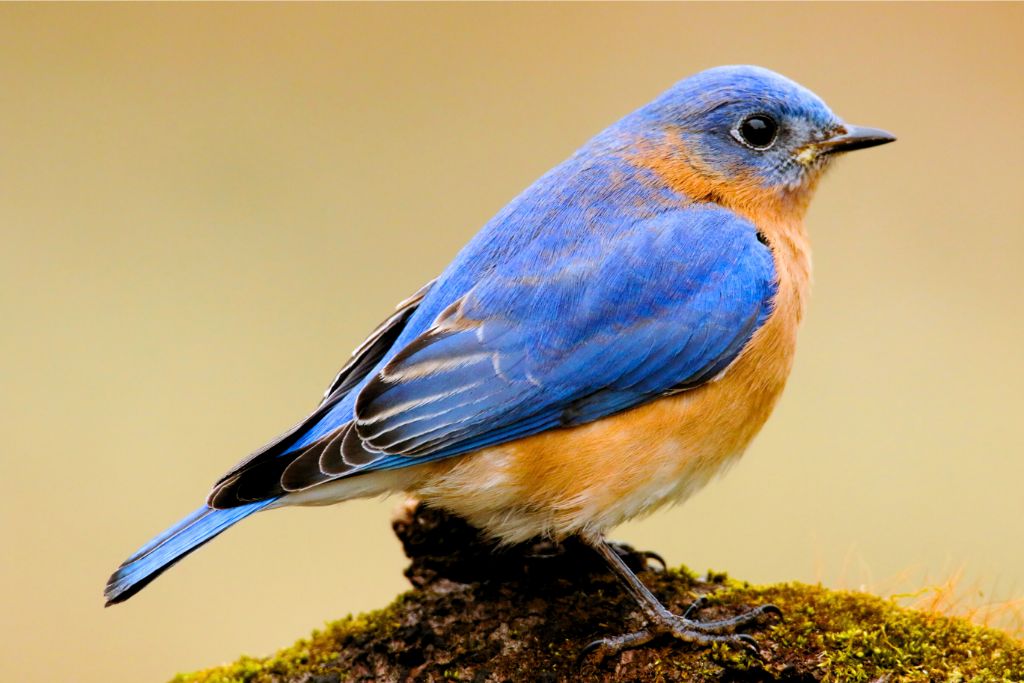
- Kingdom: Animalia
- Phylum: Chordata
- Class: Aves
- Order: Passeriformes
- Genus: Sialia
- Species: S. sialis
The eastern bluebird (Sialia sialis) is a small thrush species, measuring about 6 to 7 inches (15 to 18 cm) in length. Males have vibrant blue plumage on their upper parts. Their underparts are typically orange or pale rusty. Females have more subdued colors with grayish-blue wings and a touch of orange on the breast.
Eastern bluebirds have slender, slightly curved beaks designed for capturing insects. They also consume berries and fruits, especially in the winter when insects are scarce.
In Florida, eastern bluebirds are commonly spotted in open areas. They can be within scattered trees, including fields, pastures, golf courses, and suburban gardens. They prefer areas with scattered trees and perches from which they can spot their prey.
These birds have adaptations that aid their survival in their chosen habitat. Their keen eyesight allows them to spot insects from a distance, and their agile flight enables them to catch their prey mid-air.
Eastern bluebirds form monogamous pairs during the breeding season. Males engage in courtship displays, fluttering their wings and singing to attract females.
They have a life expectancy of around 6 to 10 years in the wild, although some individuals have been known to live longer.
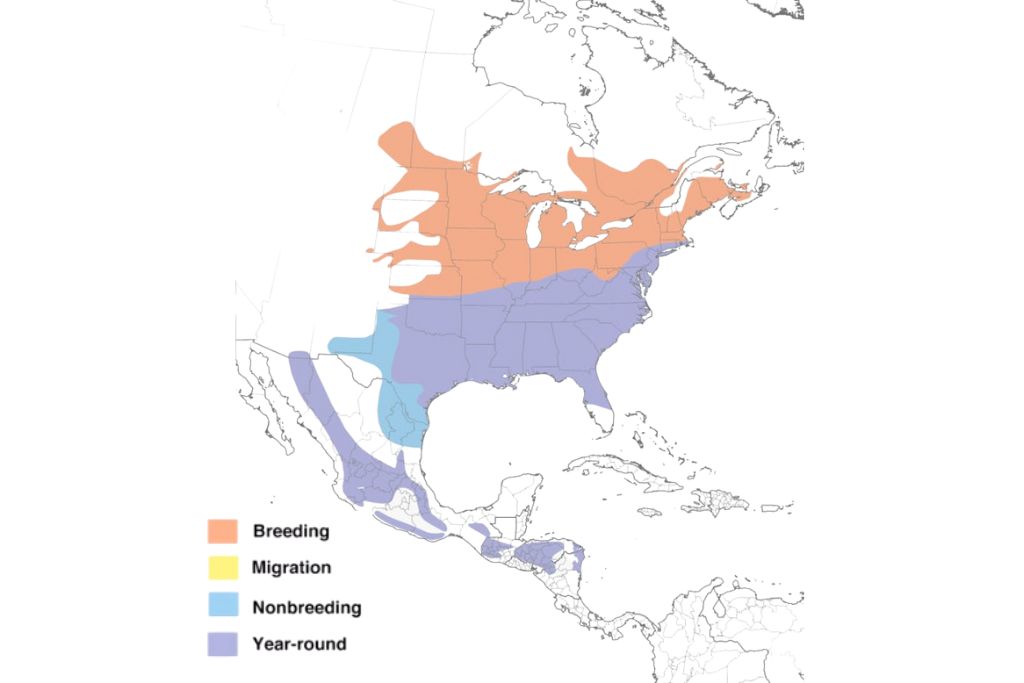
These birds have a melodious, flute-like song consisting of warbles and whistles. Their vocalizations are often described as sweet and cheerful, adding to their charm as songbirds.
These birds are considered to be symbols of happiness and good fortune. Their presence is often associated with the arrival of spring and renewed vitality in nature.
3. Western Bluebird
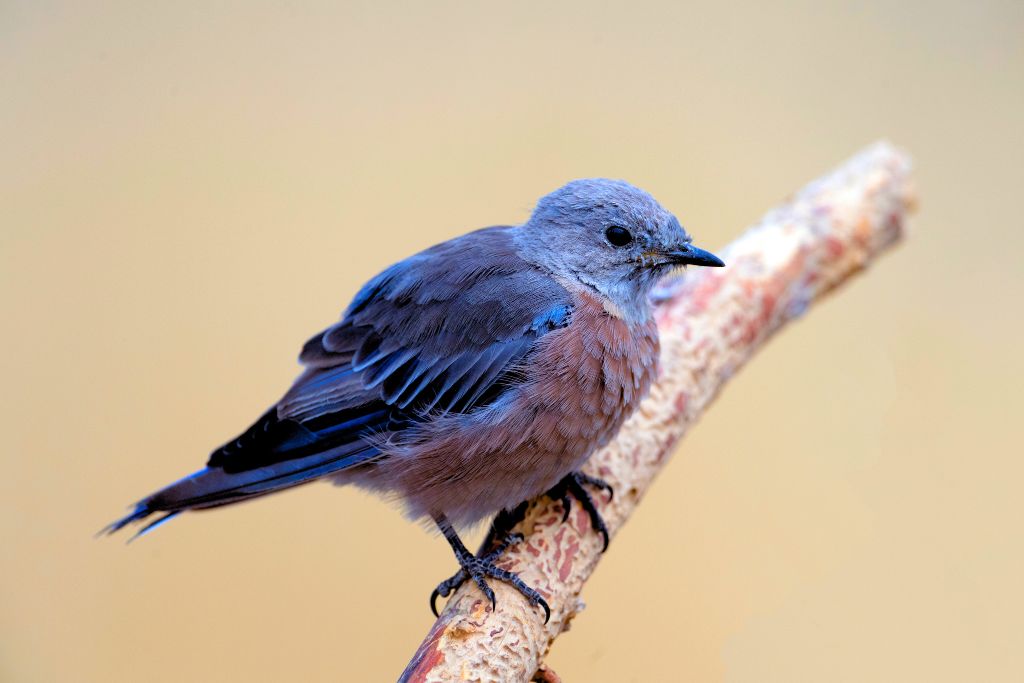
- Kingdom: Animalia
- Phylum: Chordata
- Class: Aves
- Order: Passeriformes
- Genus: Sialia
- Species: S. mexicana
The western bluebird (Sialia mexicana) is a small thrush species measuring about 6 to 7 inches (15 to 18 cm) in length. Males have bright blue plumage on their upperparts, a reddish-brown breast, and a blue-gray belly. Females have more subdued colors with a gray-brown back and pale blue wings.
The western bluebird is primarily found in western regions of North America, but they sometimes venture into Florida, particularly during migration periods. These bluebirds prefer open woodlands, meadows, and grassy areas with scattered trees.
They can also be found in agricultural fields, pastures, and parks. These habitats provide them with suitable perches for hunting insects and ample open spaces for foraging.
Western bluebirds have short, thin beaks suited for catching insects, their primary food source. Their adaptations include excellent eyesight. It helps them spot insects from a distance and their ability to hover and catch prey in mid-air. They are agile fliers, capable of easily maneuvering through trees and open spaces.
Female western bluebirds lay a clutch of about 4 to 6 pale blue eggs, which she incubates for approximately 12 to 14 days. Both parents share incubation duties and later participate in feeding the chicks.
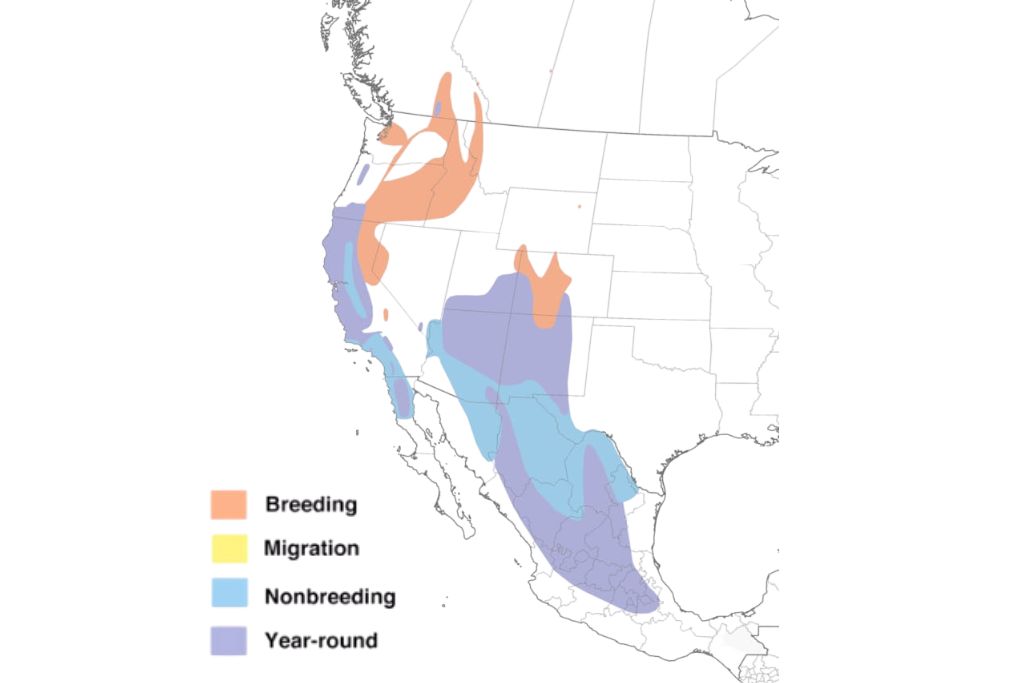
After hatching, the parents feed the chicks a diet of insects and other small invertebrates. The young birds fledge in about 15 to 20 days after hatching.
These birds have a soft, melodious song consisting of warbles and trills. Their vocalizations are pleasant to the ear and add to the beauty of their presence. Western bluebirds are social birds and often gather in small flocks during the non-breeding season.
4. Mountain Bluebird
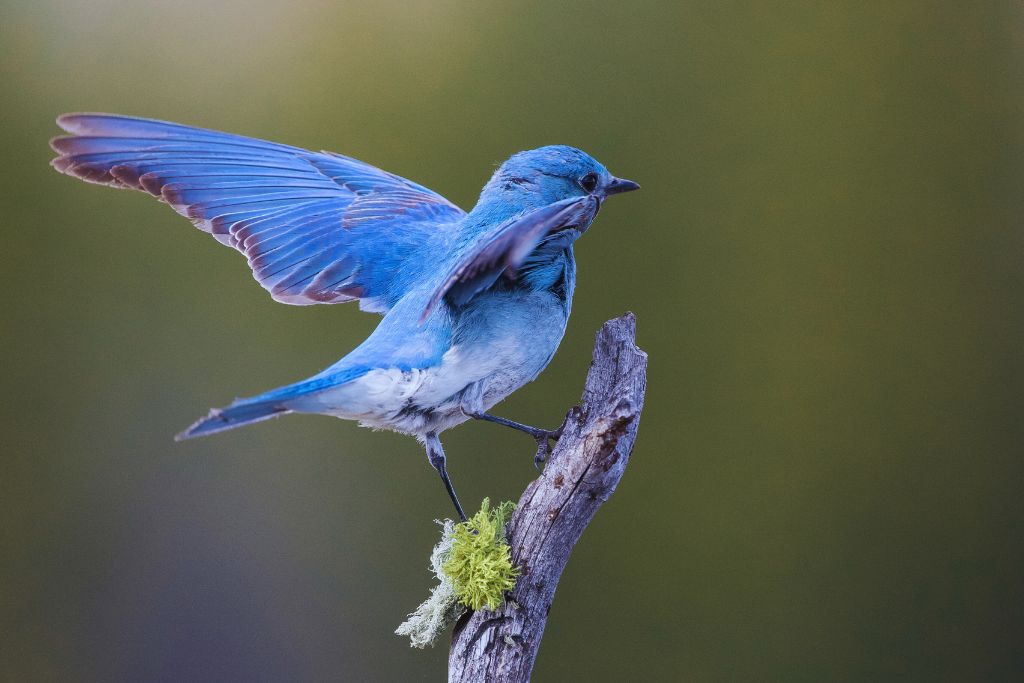
- Kingdom: Animalia
- Phylum: Chordata
- Class: Aves
- Order: Passeriformes
- Genus: Sialia
- Species: S. currucoides
The mountain bluebird (Sialia currucoides) is a medium-sized thrush species, measuring about 6.5 to 7.5 inches (17 to 19 cm) in length. Males have vibrant sky-blue plumage and a pale blue belly on their upper parts and throat. Females have a more muted coloration with grayish-blue wings and a pale orange-brown belly.
This bluebird is primarily found in western regions of North America, including mountainous areas. Occasional sightings have been reported in Florida during migration periods.
Mountain bluebirds are found in open habitats, including meadows, grasslands, and sagebrush plains. They also inhabit mountainous regions with scattered trees and shrubs.
They have short, straight beaks. These are for capturing insects, their primary food source. They also consume berries and fruits, particularly during the winter months.
The life expectancy of mountain bluebirds in the wild is around 6 to 10 years, yet some individuals have been known to live longer. This is especially with favorable habitat conditions and minimal threats.
Mountain bluebirds are famous for their habit of perching on fences or posts. This is because they typically scan the surroundings for prey.
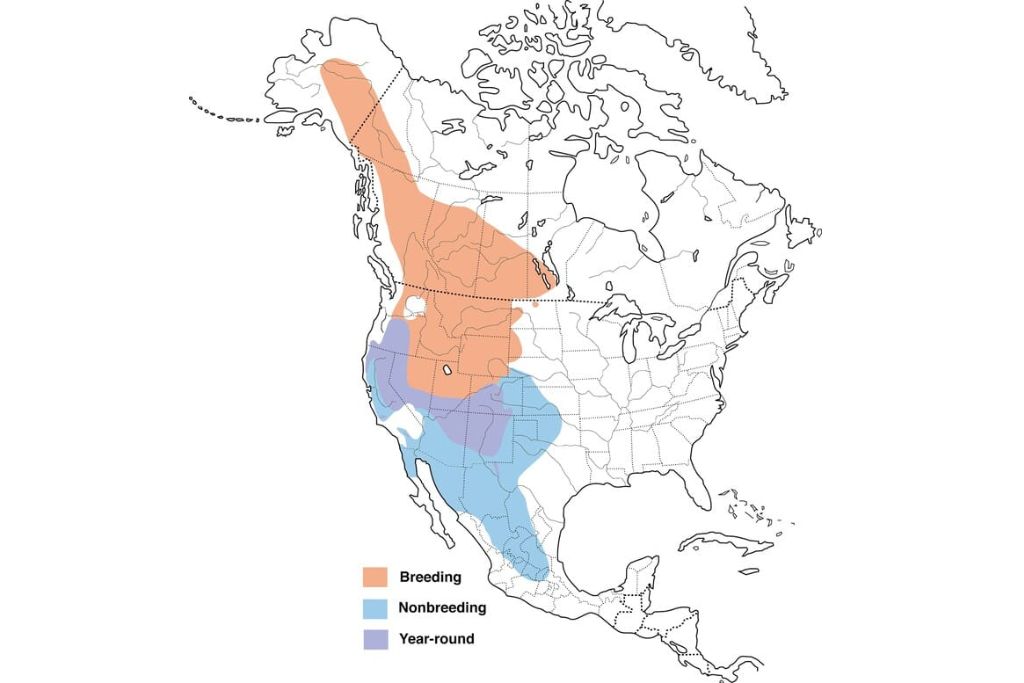
Their adaptations include excellent eyesight, allowing them to spot insects from a distance, and their ability to hover and catch prey mid-air. They are agile fliers, capable of swiftly maneuvering through open spaces.
These birds have a soft, musical song consisting of warbles and trills. Their vocalizations are pleasant to the ear. These add to the beauty of their presence in the natural environment.
5. Belted Kingfisher
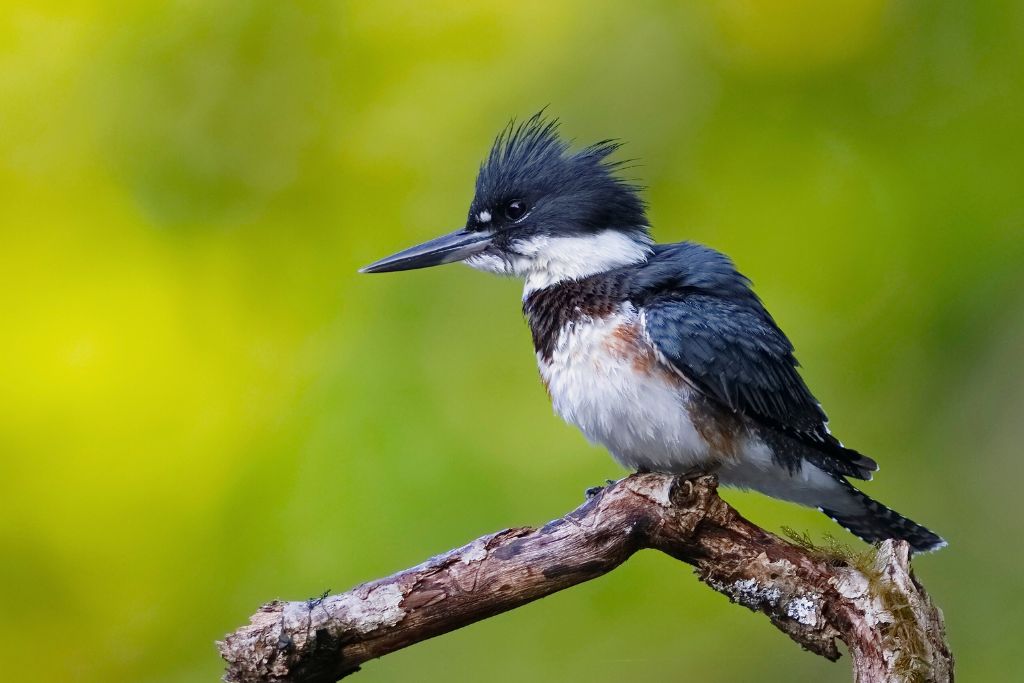
- Kingdom: Animalia
- Phylum: Chordata
- Class: Aves
- Order: Coraciiformes
- Genus: Megaceryle
- Species: M. alcyon
Blue colored birds in Florida are fascinating to look at. One is belted kingfisher (Megaceryle alcyon), which looks different from other birds. The birds are about 11 to 13 inches long and weigh between 4 and 6 ounces.
Their thick bodies, big heads with shaggy crests, and long, thick bills make them easy to spot. Male belted kingfishers have blue-gray heads and top parts, a white collar, and a blue-gray band across the breast. The female belted kingfisher has a band of rusty color across its chest and a blue-gray head.
These birds are hunting-adapted. Belted kingfishers use their long, strong bills and huge heads to catch and grip tiny fish. They’re great divers and can catch fish from perches. Rivers, lakes, streams, and coastal environments are where they are found. They like areas with plenty of fish and perching perches to examine their surroundings.
Belted kingfishers live 6 to 14 years. Their longevity depends on predation, habitat, and food supply.
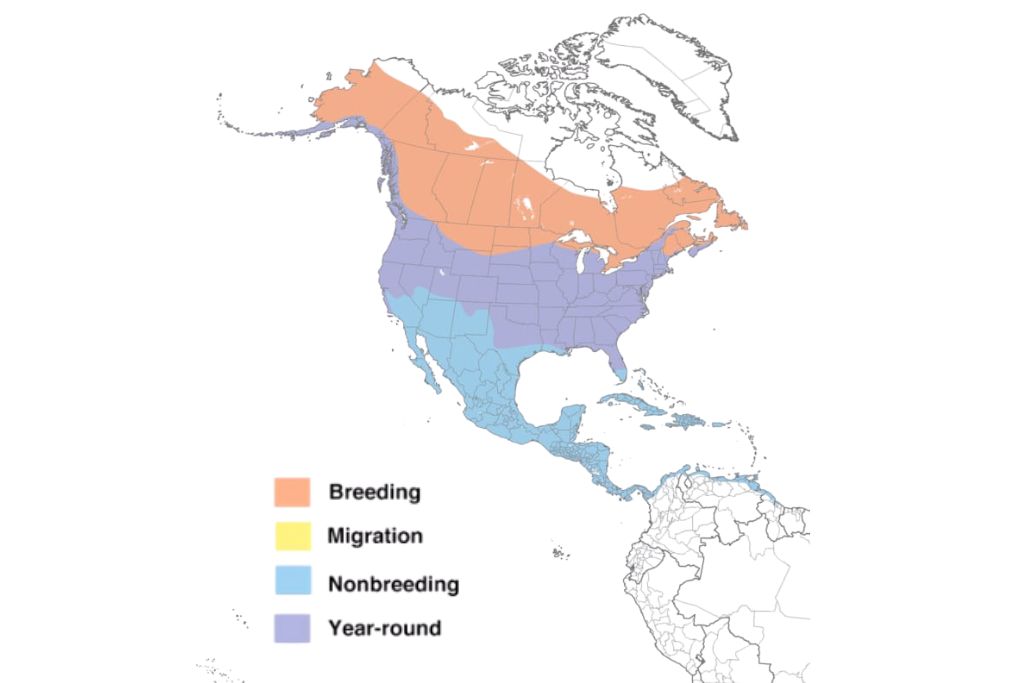
In Florida, belted kingfishers are found around freshwater lakes, rivers, streams, and coastal areas. They often sit on branches near the water, looking for prey. Wetlands, wildlife refuges, and coastal estuaries are popular places to see them in Florida.
6. Tree Swallow
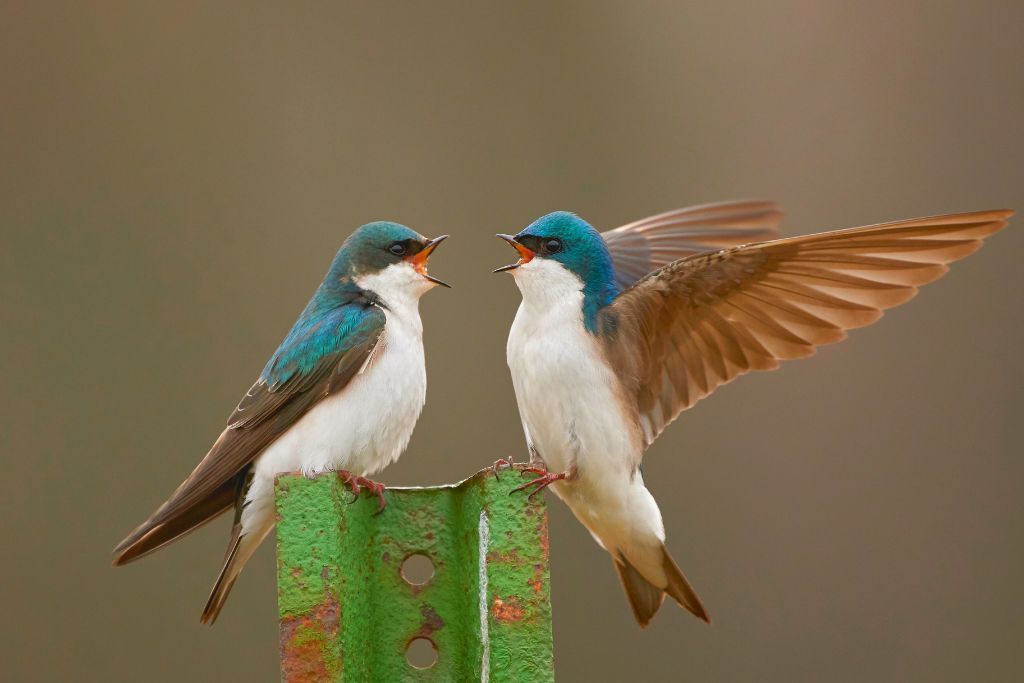
- Kingdom: Animalia
- Phylum: Chordata
- Class: Aves
- Order: Passeriformes
- Genus: Tachycineta
- Species: T. bicolor
Tree swallows are pretty blue birds in Florida and other places. Their blue feathers make them a unique species of bird. They have a length range of 5.5 to 6.7 inches and a slender build. Their upper feathers are often a glossy blue, while their undersides are typically white. Because of their long, pointed wings and slightly forked tails, these birds can easily glide through the air.
In nesting and breeding behaviors, they use grasses, feathers, and other soft materials to build cup-shaped nests in tree cavities or man-made nest boxes. Both parents incubate the female’s clutch of 4 to 7 white eggs. The chicks are fed insects by their parents after hatching. After fledge, young birds need their parents for a few weeks before becoming independent.
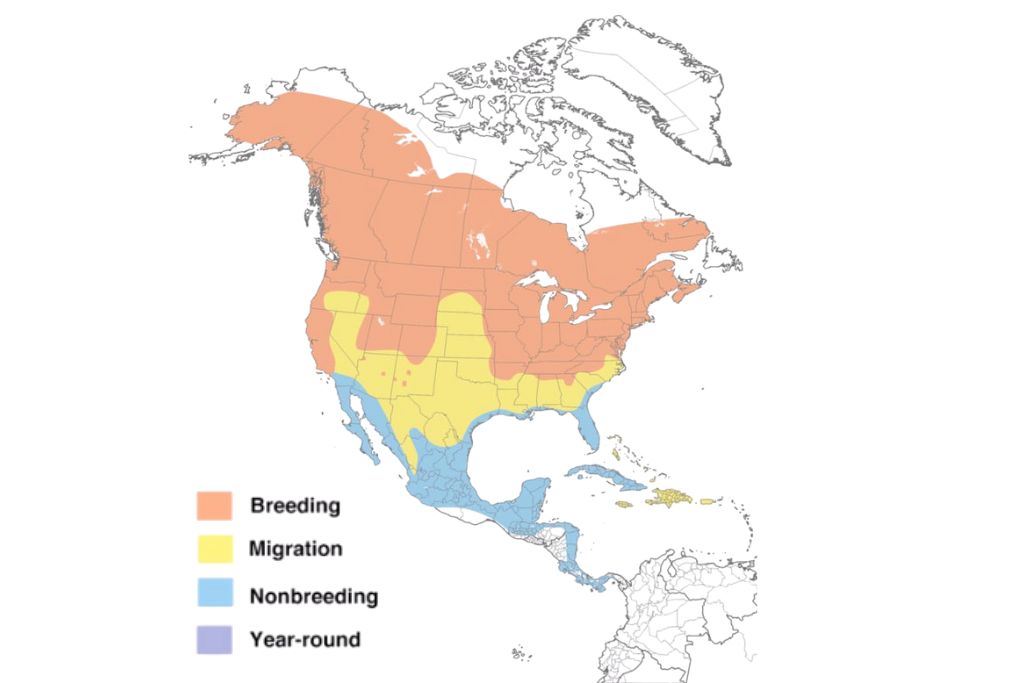
In Florida, tree swallows are found in open areas, wetlands, and near water. Both natural and human-altered ecosystems contain them. Tree swallows’ vivid blue plumage and beautiful aerial displays make them popular Florida bird photos.
FAQs
Do Bluebirds Stay in Florida All Year?
Yes, bluebirds are known to be year-round residents in Florida, which means they stay in the state throughout the entire year. They can be found in various habitats across Florida.
Are Bluebirds Native to Florida?
Yes, bluebirds are native to Florida. They are a common and natural part of Florida’s avian fauna. Bluebirds can be found in different parts of the state, including residential areas, parks, and open woodlands.
Are Blue Birds Good to Have Around?
Bluebirds are generally considered beneficial and desirable to have around. They are cavity-nesting birds and help control insect populations by feeding on insects, including harmful pests.
What Attracts Bluebirds?
Bluebirds are attracted to areas that provide suitable nesting sites and a sufficient supply of insects for food. They are particularly attracted to open habitats with scattered trees or perches and areas with nest boxes or artificial cavities.
What are Blue Birds Known for?
Bluebirds are known for their vibrant blue plumage, which is striking and visually appealing. They are also known for their melodic songs.
Is a Bluebird a Symbol of Good Luck?
Yes, a bluebird is generally considered a symbol of good luck in Western culture. The bluebird has positive qualities such as fertility, transformation, wisdom, and good fortune.
What Habitats Do These Bluebirds Prefer in Florida?
Bluebirds in Florida prefer a range of habitats, including open woodlands, fields, meadows, grasslands, and forest edges.

